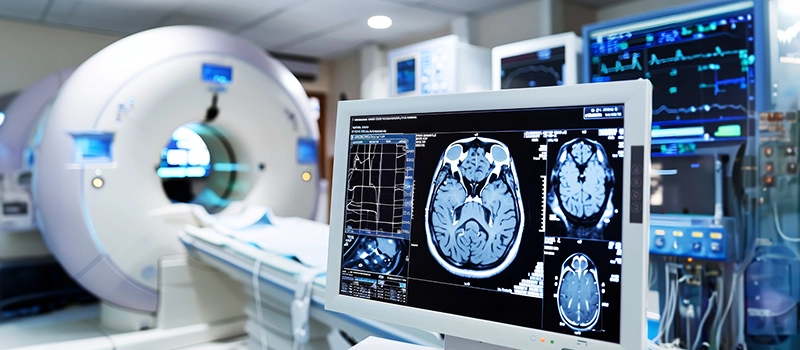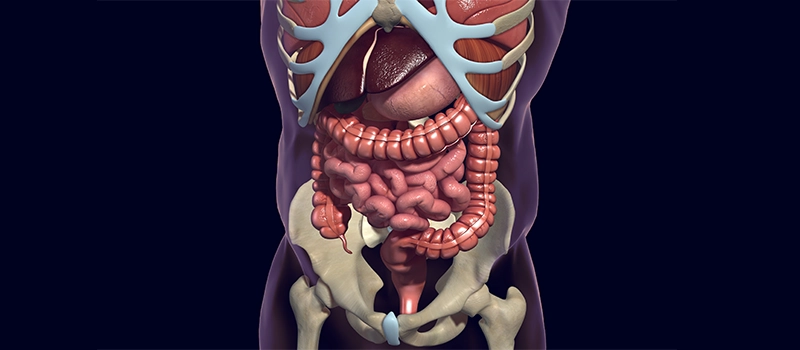Bachelor of Medicine, Bachelor of Surgery (MBBS) is an undergraduate degree in medicine. The course is of four and a half years, followed by one year of compulsory rotational internship. There are a total of 19 subjects in the MBBS curriculum.
There are three subjects in the first year of the MBBS, Anatomy, Biochemistry, and Physiology. There are numerous books available for the MBBS subjects but choosing the right set of books is highly important.
Here’s a list of recommended books for MBBS 1st year students:
Best Books of Anatomy for MBBS Students:
| Subject: Anatomy |
Author |
Description |
| Self-Assessment and Review of Anatomy |
Rajesh K Kaushal |
- The book is written in simple language with labelled diagrams, tables, and flowcharts making it easier for students to read and learn.
- The book has 11 chapters, including general anatomy, embryology, histology, neuroanatomy, head and neck, back, thorax, upper limb, abdomen, pelvis, and lower limb.
- It provides conceptual clarity over all the topics including the clinical applications.
- Every chapter includes questions along with a detailed explanation.
|
| New Across: A Complete Review of Short Subjects |
Saumya Shukla, Siddharth Dixit, Anurag Shukla & Khushi Shukla |
- It is one of the best-selling MCQ books on short subjects.
- To make the students learn easily, the subjects are divided into theory and MCQs along with concise notes for each chapter.
- The book contains tables, figures, flowcharts, and mnemonics to help students prepare and memorize well.
- It is even recommended as one of the best books for NEET-PG preparation.
|
| Human Anatomy |
BD Chaurasia, Krishna Garg |
- The book follows the CBME pattern along with the latest updates and advancements.
- The chief feature of the book includes the hand-drawn line diagrams by Dr. BD Chaurasia and color codes in the drawings.
- FAQs and MCQs are structured in the ‘clinical mode’.
- Early Clinical Exposure (ECE) has been offered in the form of a specific case’s signs, symptoms, investigations, and treatment.
- Viva voce questions, molecular regulation, clinic-anatomical problems, ossification, and dissection (steps) are all included in the book.
|
| Gray’s Anatomy for Students |
Raveendranath Veeramani, Sunil Jonathan Holla, Parkash Chand & Sunil Chumber |
- It is the gold standard book for anatomy.
- The updated edition incorporates ground-breaking elements like set introductions, chapter summaries, and flowcharts to aid learning.
- Levels I, II, and III are listed as the “structures to be identified in a dissection,” which correspond to the content that is “must know,” “desirable to know,” and “good to know,” respectively.
- Updates on imaging methods have been made, and dissection has received the appropriate amount of emphasis to help students understand the value of having a solid understanding of the relevant anatomy.
- To encourage readers to refer to the visuals while learning, more figure numbers are mentioned in the text. The beginning of each chapter includes helpful review aids.
- The cranial nerves have received more attention by having their pertinent details described with numerous extra examples and flowcharts.
|
| Cunningham’s Manual of Practical Anatomy |
Rachel Koshi |
- This textbook is the perfect practical anatomy book for undergraduate students because it features clear language that is easy to read.
- Each dissection starts with learning objectives, and the dissection lab makes it simple to follow with detailed step-by-step instructions.
- Full colour, completely revised artwork brings the amiable explanations to life.
- Anatomy’s relationship to clinical medical practice is explained in new clinical application boxes and radiological images throughout the book.
- Multiple-choice questions at each section’s conclusion allow students to rapidly review their understanding before looking up the solutions in the appendix.
|
Best Books of Biochemistry for MBBS Students:
| Subject: Biochemistry |
Author |
Description |
| Self-Assessment and Review of Biochemistry |
Rebecca James Perumcheril |
- The book is a complete concept-based study with the latest references and includes image-based information, high-yield topics, mnemonics, and tables.
- It is highly recommended for the competitive entrance examinations as it comprises the previous year’s questions.
- The book contains the chapter reviews based on Harper’s 31st ed, Lehninger’s 7th ed, and Robbin’s 9th ed and clinically correlated with facts from Harrison’s 20th ed, Nelson’s 20th ed, and CMDT 2019.
|
| Textbook Of Biochemistry for Medical Students |
DM Vasudevan, Sreekumari S & Kannan Vaidyanathan |
- The book is accepted as one of the textbooks of Biochemistry by MCI.
- This edition’s inclusion of clinical case studies in nearly every chapter is one of its main draws. The students will be assisted in determining the clinical applicability of biochemistry through this feature.
- In most of the chapters, additional points that are clinically pertinent are added.
- The latest advancements in molecular biology have been included.
- There are 50 chapters in all and 6 parts in this textbook. Nearly every chapter concludes with essay questions, quick notes, multiple choice questions, and viva-voce style questions.
- This textbook includes roughly 1,000 figures, 200 tables, and 200 boxes, all of which make the book more user-friendly for students.
|
| Biochemistry |
U. Satyanarayana & U. Chakrapani |
- The key features of the book include Self-assessment exercises, Origins of Important Biochemical Words, Common Confusables in Biochemistry, Practical Biochemistry Principles, Clinical Biochemistry Laboratory, Case Studies with Biochemical Correlations, and Reference Biochemical Values.
- The book features a four-line verse at the start of each chapter, then the text with clinical correlations, a summary, and self-evaluation exercises. The content and graphics are engaging, and the proper headings and subheadings are in bold to make it easier to read and remember.
- It includes the fundamentals (Bioorganic and Biophysical Chemistry, Tools of Biochemistry, Immunology, and Genetics), Confusables in Biochemistry, Origins of Biochemical Words, Principles of Practical Biochemistry, and Clinical Biochemistry Laboratory for novices to study Biochemistry simply.
- The book contains highly illustrative colorful images which help the students memorize easily.
|
| Lippincott Illustrated Reviews: Biochemistry (South Asian Edition) |
Denise R. Ferrier
SAE Editors: Ritu Singh, Rajeev Goyal |
- The book explains how biochemistry relates to routine medical care through interdisciplinary, chapter-based cases and “Clinical” boxes scattered throughout.
- With a clear outline format, a tonne of full-color illustrations, and chapter summaries, learning and studying are made simple.
- It includes an expanded chapter on macronutrients and micronutrients and much more.
- The chapter on blood clotting is a bonus point of the book.
|
| Harper’s Illustrated Biochemistry |
Kathleen Botham, Peter J. Kennelly, Owen McGuinness, P. Anthony Weil, Peter Kennelly, Victor Rodwell |
The book includes the following important topics:
- Toxic naturally occurring amino acids, extraterrestrial biomolecules, computer-aided drug design cells, basophils, and eosinophils, the role of the complement cascade in bacterial and viral infection, secreted mediators of cell-cell signalling between leukocytes, the hazard of antioxidants that down-regulate radical signalling for apoptosis and increase risk of cancer and much more.
- With case studies emphasizing the clinical relevance of biochemistry, review questions following each of the eleven sections, “Objectives” boxes defining the goals of each chapter, and tables encapsulating crucial information, this authoritative guide presents information in a way that helps you retain everything you read.
- More than 600 pictures are included in this book, which also contains a section on the topic’s biomedical value in each chapter.
|
Best Books of Physiology for MBBS Students:
| Subject: Physiology |
Author |
Description |
| Principles of Physiology |
Debasis Pramanik |
- The use of coloured boxes to highlight complex physiology themes in the text is one of the book’s most appealing elements.
- The themes are broken down into twelve sections, with the first section providing a thorough explanation of general physiology. The second section discusses the physiology of nerve and muscle.
- All of the pertinent hematology-related subjects are outlined in the third section. The circulatory system, the digestive system, and the excretory system are all covered in detail in the fifth, sixth, and seventh sections, respectively.
- The respiratory system is covered in detail in the fourth section.
- The ninth section goes into detail about metabolism.
- The neurological system, endocrine system, and reproductive system are all carefully described in the ninth, tenth, and eleventh sections, respectively.
|
| Review of Physiology |
Soumen Manna |
- This book’s content is arranged into eight divisions, each of which contains nineteen chapters, according to the various organ systems.
- General physiology, nerve-muscle physiology, the cardiovascular and respiratory systems, the central nervous system, the renal and gastrointestinal systems, and the endocrine and reproductive systems are among these sections.
- Each chapter begins with a brief introduction to the topic before moving on to multiple-choice questions (MCQs) and their clear, short, and accurate explanations, which are supported by citations to relevant research papers and/or standard textbooks.
- Important details have been retained in the “side boxes” so that students can quickly and easily review the text.
- This edition also includes a brand-new chapter called “Male and Female Reproductive Physiology”.
|
| Crisp Complete Review of Integrated Systems Physiology |
S Krishna Kumar |
- This book provides straightforward explanations of physiological fundamentals.
- It includes information from pharmacology and pathophysiology integrated at the conclusion of each topic.
- It includes an analysis of ECG questions, an analysis of questions pertaining to acid-base disorders, an analysis of calculations pertaining to respiratory physiology, image-based questions at the conclusion of each chapter, and significant one-liner IOLs.
|
| Guyton and Hall Textbook of Medical Physiology (South East Edition) |
John E. Hall, Michael E. Hall
Adaption Editors: Mario Vaz, Anura Kurpad, Tony Raj
|
- It includes broader clinical coverage of degenerative diseases like obesity, metabolic and cardiovascular issues, and Alzheimer’s disease.
- Flowcharts and flow diagrams are used to simplify complex concepts and processes for easier comprehension.
- Better knowledge of Physiology by the more than 1000 expertly made illustrations and sketches that are included.
- It provides a clinically oriented viewpoint, connecting fundamental physiology and pathology, and highlighting key cellular and molecular mechanisms in clinical medicine.
- Based on the most recent research in the field and updated throughout using the Guyton and Hall Textbook of Physiology, 14th edition.
- The book’s information has been revised to reflect all topics covered under the new MCI curriculum.
|
| Textbook of Physiology |
A.K. Jain |
- The book has two volumes.
- Over 700 figures, 2000 multiple-choice questions, and more than 1000 study questions are included.
- For a better understanding of clinical topics, numerous clinical images have been included.
- Each chapter’s study questions have been changed in accordance with standards provided by the Medical Council of India (MCI).
- General Physiology, Blood, Nerve, and Muscle Physiology, Digestive, Cardiovascular, Respiratory, and Excretory Systems are all included in Volume I.
- The organ systems covered in Volume II are the nervous system, the reproductive system, the endocrine system, metabolism and nutrition, and the special senses.
- The South Asian Edition’s main characteristics are extensive material revisions and updates, a lengthy section on micronutrients, and blood coagulation.
|
While textbooks are essential for any MBBS student, complementing them with digital resources can greatly enhance learning.
DigiOne, designed for first-year MBBS students, is an excellent supplementary tool that covers the core pre-clinical subjects like Anatomy, Physiology, and Biochemistry.
Through expert-led video lectures, interactive quizzes, and memory aids like mnemonics, DigiOne provides a deeper understanding of complex concepts, making it easier to grasp and retain information.
Additionally, the well-organized digital notes with color-coded highlights offer quick reference material, ensuring that students are always prepared and confident in their studies.
To get conceptual clarity on MBBS courses online, click here.



















































